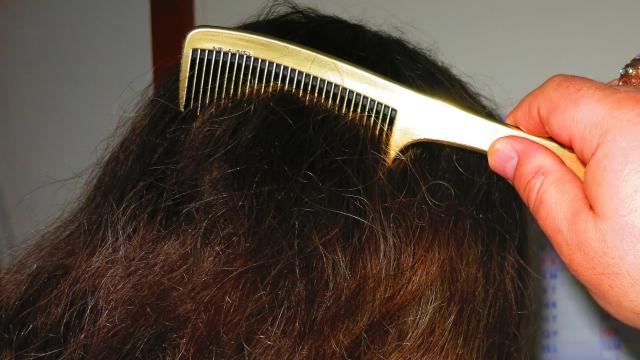A team of scientists are using their training in physics to solve some real-world problems—like the optimal strategy for detangling long hair.
The researchers (all men, if you were wondering) from Harvard University set out with three core questions in mind: What is the best combing strategy? Can you use science to describe the act of combing? And what general principles can you derive from studying tangled hair?
“I want to take naturally knotted objects and tame them into a stylish hairdo,” Thomas Plumb-Reyes, graduate student at Harvard University, said (to laughter) during a talk at the American Physical Society March Meeting in Boston this week.
Studying the physics of something usually requires first abstracting it into a simulation that’s easier to manage than an actual mess of hair. Rather than thinking about hair as many strands tied together, the researchers realised they could simplify it as just two twisted strands in a double-helix shape. They could then expand insights from this model to describe hair more generally.
The researchers recreated the twisted strands as two pieces of twisted fishing line. Then, they inserted a a single rod to represent a comb at various locations along the twisted mass and dragged it downward, measuring the forces and the shape of the twist along the way.
They moved on to experiments using a comb through horse hair, and were then able to create a computational model to explain their results.
Their not-so-surprising results: It’s easier to detangle hair by beginning to comb close to the tips of hair strands, steadily working your way up closer to the scalp.
It’s important to note that this is a simplification of tangled hair, which means there are potential unaccounted-for effects introduced by more hair strands. Additionally, the model requires an assumption about the texture of the hair: that it’s only slightly curly.
Hair-combing experiment results are useful for more than just overcoming bedhead, though. The research could find potential applications in industry, like preparing animal fibres spun into yarn, or in other physical systems comprised of tangled filaments, like magnetic fields.
Generally, physicists study very specific things with the hope that they’ll offer insights to similar, more general problems.
Strings and knots are already an important topic of mathematical study in a field called topology, the study of things that maintain certain properties even when you move them around or crumple them up. Advances in topological research were the subject of the 2016 Nobel Prize, and could hold secrets to new materials, certain quantum computers, and even a better understanding of knitting.
You can really science anything these days!
